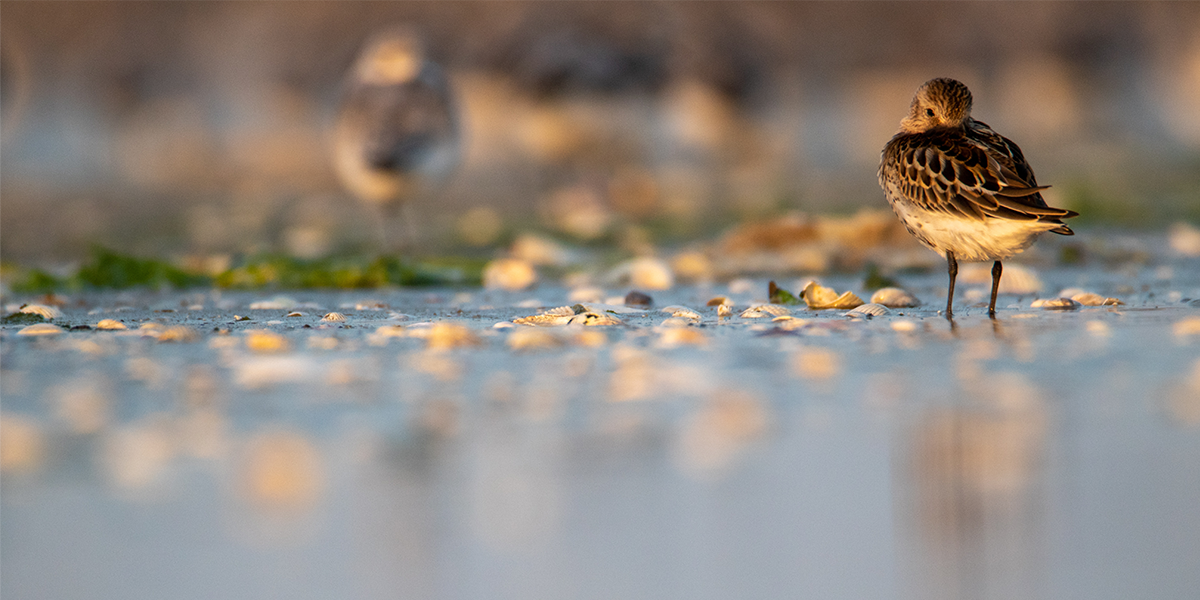Sea levels and intertidal ecosystems
Intertidal ecosystems, like the Wadden Sea, provide rich habitats for shellfish, worms, fish, and millions of shorebirds, but are threatened by sea-level rise. While sea level rise may partly be compensated by increased sedimentation, sediment-composition can change, which may lead to cascading effects in the intertidal ecosystem. We will quantify relations between bathymetry, sedimentology, benthic- and bird communities. By capitalizing on recent morphological advances and two NIOZ time-series for benthos and shorebirds (SIBES and WATLAS), this research creates a unique opportunity for an ecosystem-wide understanding of how sea level rise affects intertidal systems.
|
|
|
By uniting NIOZ-ecologists and UU-geomorphologists, this research creates a unique opportunity for understanding how sea level rise will affect the vulnerable intertidal ecosystem of the Wadden Sea. |
|
Allert Bijleveld, Maarten Kleinhans |

Project Team

Project description
Sea-level rise as a consequence of climate change is projected to threaten low-lying coastal areas and their valuable ecosystems1. Intertidal ecosystems, such as the Wadden Sea, are especially vulnerable, as even a small increase in relative sea level may lead to the submersion of mudflats and disturbance of the ecosystem2. The Wadden Sea, The Netherlands’ only natural UNESCO World Heritage Site, provides rich habitats for marine mammals, fish, worms and shellfish, and its tidal flats are crucial to millions of shorebirds3,4. Current model estimates of the effects of sea-level rise on the Wadden Sea’s bathymetry show that the mudflats should be resilient to moderate rates of SLR, as sedimentation would be able to keep up5. However, these estimates ignore habitat-scale spatial variation, changes in sediment composition, and the delay of sediment transport from tidal inlets towards the interior mudflats. Benthic invertebrates, such as shellfish and worms, are strongly associated with sediment composition and inundation times, and sedimentological changes can therefore have a large effect on their distribution6. Effects of sea-level rise on the distribution and abundance of these invertebrates are likely to cascade to their predators, particularly the shorebirds that feed on intertidal mudflats. Because shorebirds are specialised in few specific prey species3, changes in invertebrate communities will affect the shorebirds’ feeding opportunities and thus their survival. Sea-level rise may also threaten the availability and suitability of foraging habitat, as the mudflats may (partially) drown. Currently, we lack a broad understanding of how sea-level rise will affect intertidal ecosystems. We propose that in addition to investigating effects of sea-level rise on bathymetry, we urgently need to investigate how changes in sedimentology affect species communities in intertidal ecosystems. We hypothesise that, even if sedimentation keeps up with sea-level rise in some climate-change scenarios, sedimentological changes will affect the community-composition of benthic invertebrates and thereby the prey-availability for foraging shorebirds.

A possible scenario of the cascading effects of sea-level rise on (A) the bathymetry and sediment composition of intertidal habitats, (B) benthic invertebrate communities (primary consumers), and (C) shorebirds (secondary consumers)
We aim to investigate the cascading effects of sea-level rise on intertidal ecosystems across multiple trophic levels: the abiotic environment (bathymetry and sedimentology), the primary consumers (benthic invertebrates), and the secondary consumers (shorebirds).
Our main objectives are:
1. Predict how bathymetry and sediment composition within tidal basins of the Dutch Wadden Sea will change under three IPCC climate-change scenarios of sea-level rise.
2. Model contemporary species distributions of benthic invertebrates and shorebirds and their habitat associations, focusing on sediment composition and inundation time.
3. Forecast effects of sea-level rise on benthic invertebrates and shorebirds in the Wadden Sea, by combining predicted changes in bathymetry (inundation time) and sedimentology (Objective 1) with the characteristics of the current species-habitat associations (Objective 2).
References
1. IPCC, Special Report on the Ocean and Cryosphere in a Changing Climate (2019).
2. N. J. Murray et al., Nature. 565, 222–225 (2019).
3. J. van de Kam et al., Shorebirds: An Illustrated Behavioural Ecology (2004).
4. M. van Roomen et al., East Atlantic Flyway Assessment 2017 (2018).
5. Z. B. Wang et al., Neth. J. Geosci. 97, 183–214 (2018).
6. C. Kraan et al., Ecology. 91, 1583–1590 (2010).
Read more +
Connected themes
- Our Dynamic Coasts
